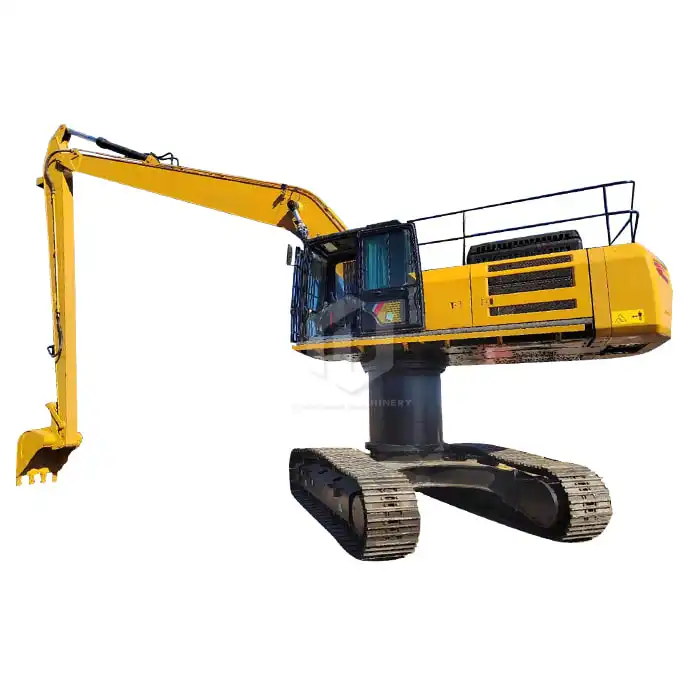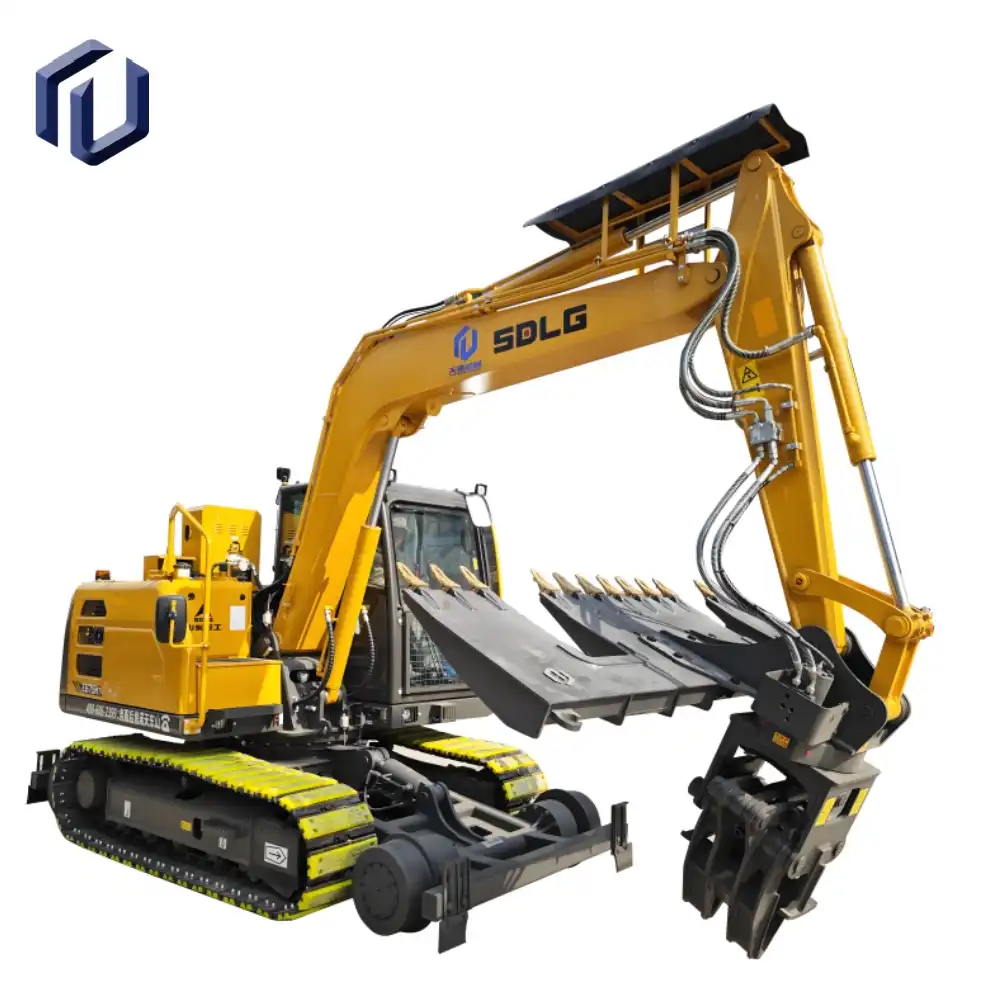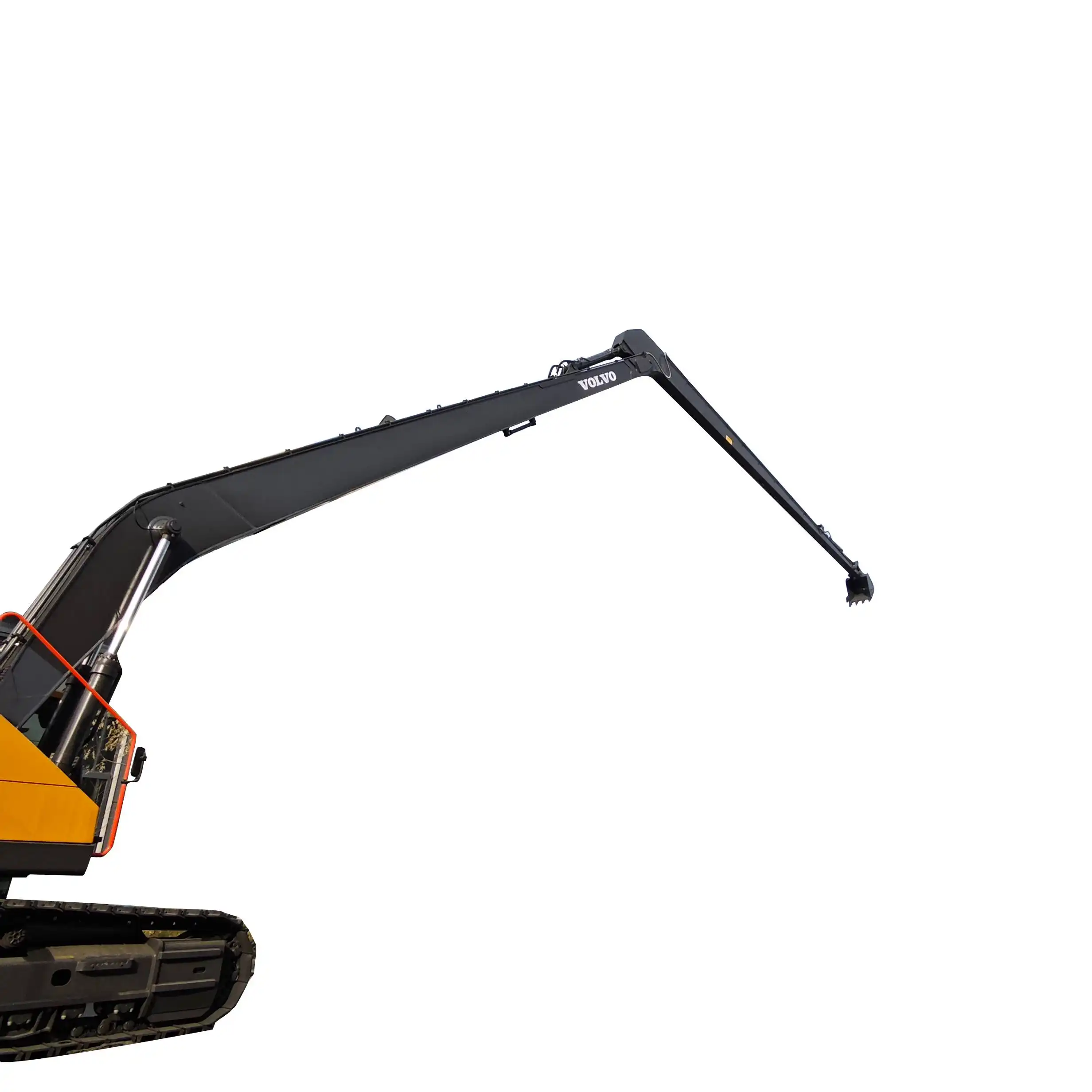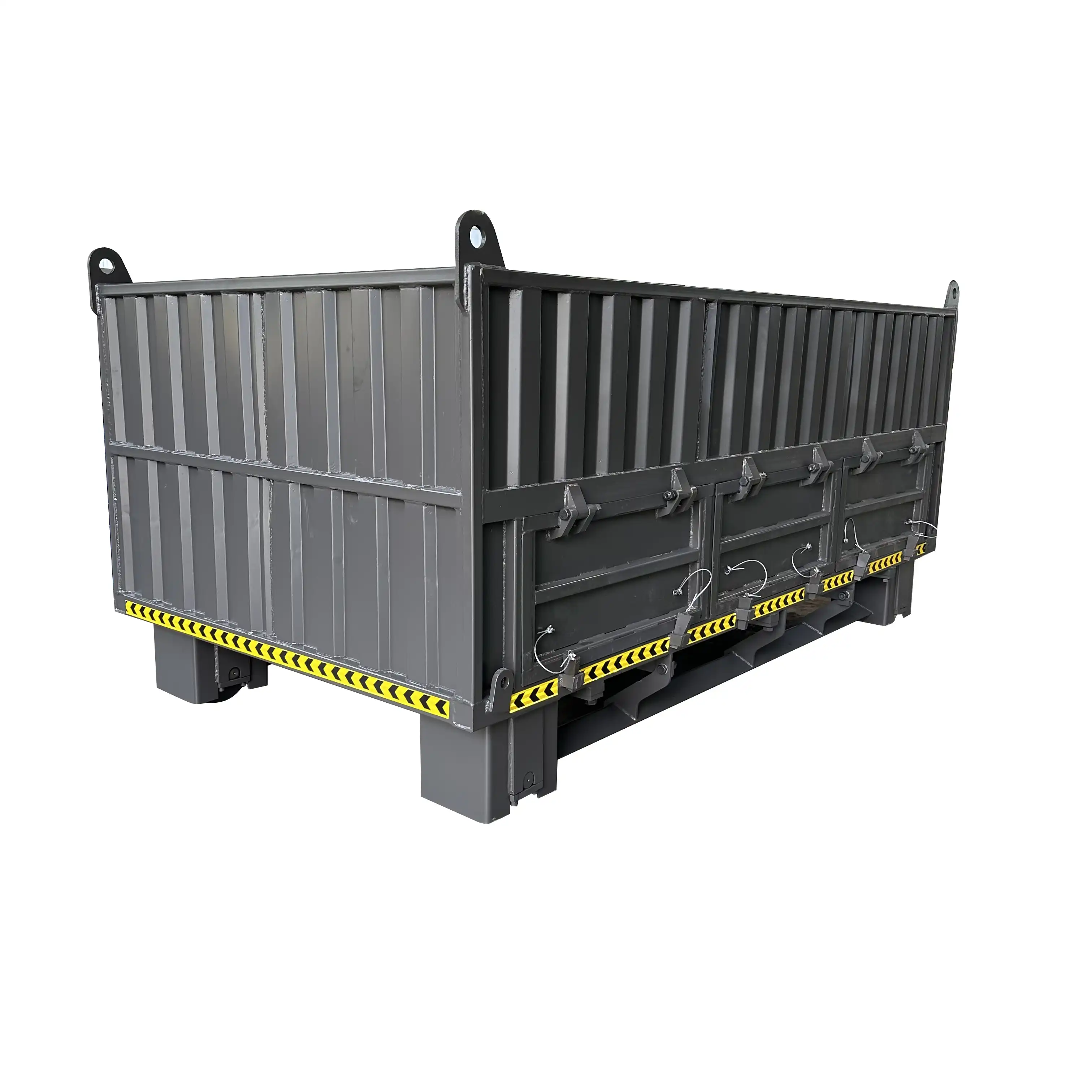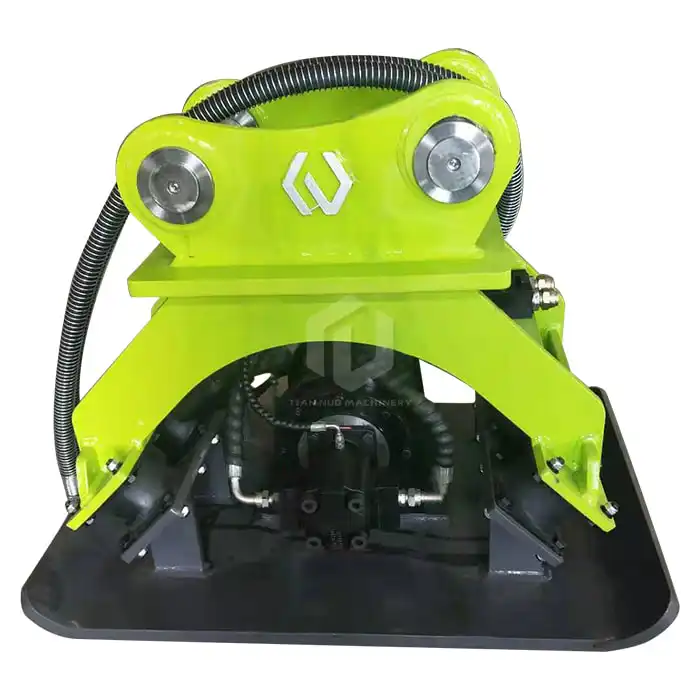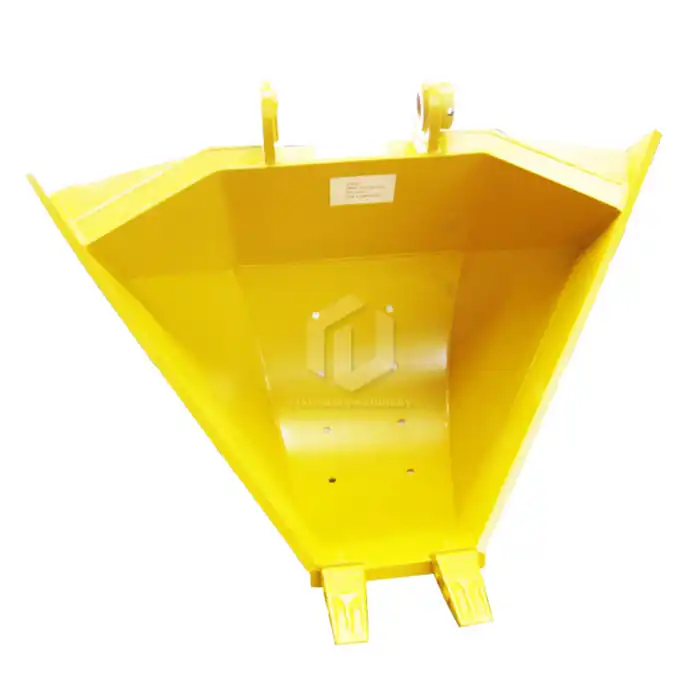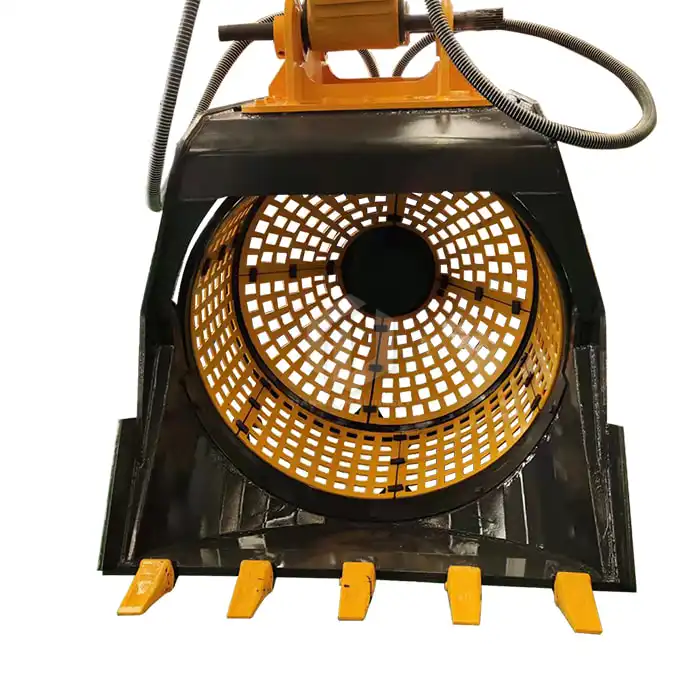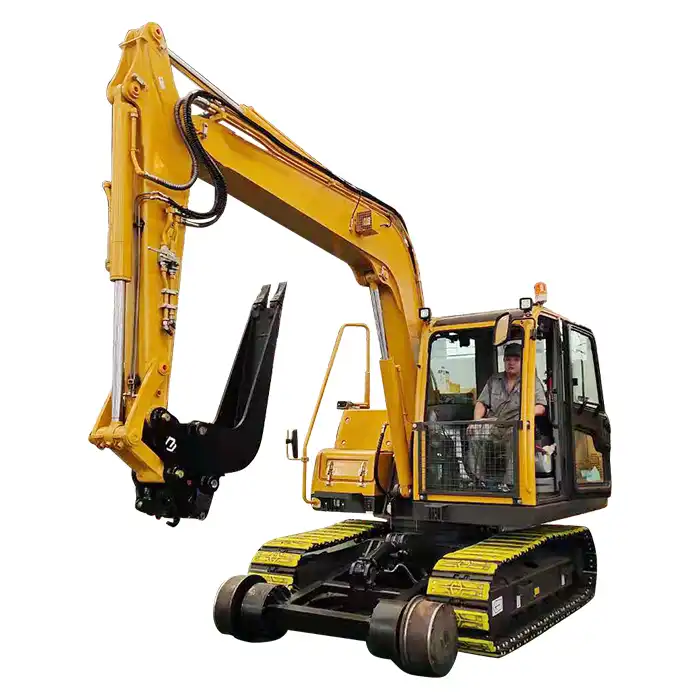How long is the boom on a long reach excavator?
The boom length on a long reach excavator boom typically ranges from 12 to 30 meters depending on the specific application and excavator size, with most standard long reach configurations extending between 15 to 22 meters from the pivot point. These extended boom assemblies consist of both the boom and arm segments working together to achieve maximum operational reach distances that far exceed conventional excavator capabilities. The actual working reach varies based on the combined length of the boom and arm assembly, with the boom itself usually measuring 8 to 15 meters while the extended arm adds another 6 to 12 meters to the total reach envelope. Understanding these length specifications becomes crucial for project planning, as different applications require specific reach capabilities - waterway dredging operations might need 18-20 meter reach, while deep foundation excavation could require 25+ meter capabilities. The boom length directly impacts lifting capacity, operational stability, and hydraulic requirements, making proper selection essential for successful project execution across industries ranging from construction and mining to environmental restoration work.
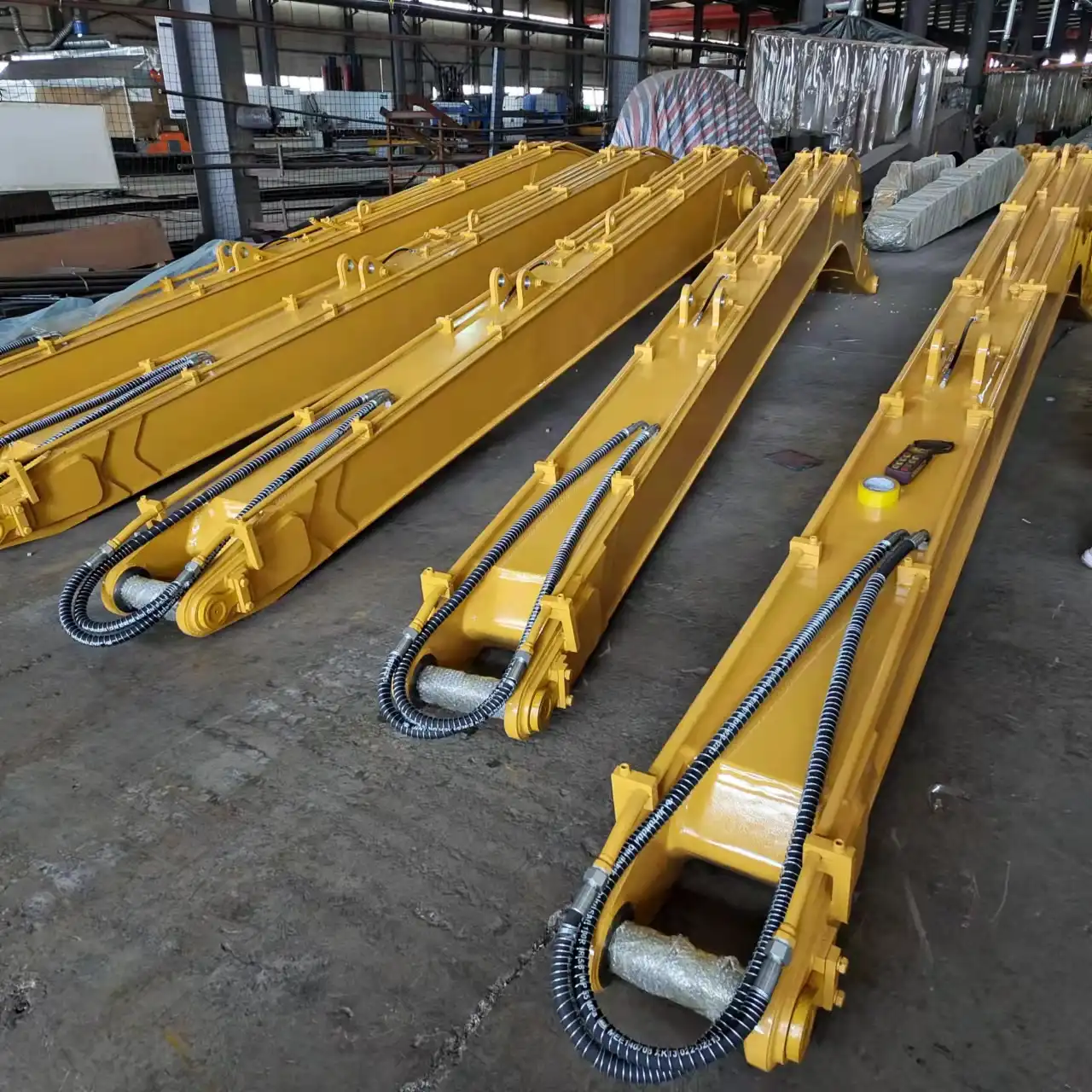
General-Purpose Long-Reach Excavators
Standard Configuration Length Specifications
General-purpose long reach excavators typically feature boom assemblies ranging from 12 to 18 meters in total reach, designed to balance operational versatility with manageable complexity and cost considerations. These configurations represent the most common deployment across construction, demolition, and maintenance applications where extended reach provides significant operational advantages without requiring the specialized engineering needed for extreme-length systems.
The boom segment in these standard configurations typically measures 7 to 10 meters, while the extended arm adds an additional 5 to 8 meters to achieve the total reach envelope. This proportional design maintains structural integrity while providing the extended capabilities needed for tasks such as river channel maintenance, building demolition from safe distances, and deep excavation work where equipment positioning constraints make standard excavators impractical.
Medium-Duty Application Requirements
Medium-duty applications often require long reach excavator boom systems in the 15 to 20 meter range, accommodating projects that demand substantial reach extension while maintaining reasonable lifting capacity and operational precision. These systems excel in urban construction environments where space constraints limit equipment positioning options, enabling operators to access work areas from stable, secure positions.
The engineering considerations for medium-duty systems involve balancing reach capabilities with hydraulic requirements and structural stability. Boom lengths in this range typically require enhanced counterweight systems and upgraded hydraulic components to maintain safe operational parameters. The 15-meter reach specification commonly found in professional-grade systems represents an optimal balance between capability and practicality for diverse construction applications.
Operational Flexibility and Versatility
The versatility of general-purpose long reach systems stems from their ability to adapt to varying project requirements while maintaining consistent performance characteristics. These systems often feature modular design approaches that allow boom length adjustments or arm extensions to accommodate specific project needs without requiring complete equipment reconfiguration.
Operational flexibility becomes particularly valuable in multi-phase projects where different work zones require varying reach capabilities. The ability to reconfigure boom lengths or adjust operational parameters helps contractors maximize equipment utilization while minimizing the need for multiple specialized machines. This adaptability translates directly into improved project economics and operational efficiency across diverse application scenarios.
Mining-Class Long-Reach Excavators
Heavy-Duty Length Specifications
Mining-class long reach excavators feature significantly longer boom assemblies, typically ranging from 20 to 30+ meters in total reach, designed to handle the extreme demands of large-scale mining operations, quarry work, and industrial demolition projects. These massive systems require specialized engineering approaches to manage the enormous structural loads and hydraulic demands associated with extended heavy-duty operations.
The boom segments in mining-class systems often measure 12 to 18 meters, with extended arms adding another 8 to 15 meters to achieve the exceptional reach distances required for mining applications. The structural engineering becomes increasingly complex at these lengths, requiring advanced materials, sophisticated load distribution systems, and enhanced safety protocols to ensure reliable operation under demanding conditions.
Specialized Mining Applications
Mining operations require extended reach capabilities for tasks such as high-wall mining, quarry face development, and overburden removal where traditional equipment positioning is either impossible or unsafe. The extended boom lengths enable operators to work from secure positions while accessing extraction zones that might be hundreds of meters away from stable equipment placement areas.
The specialized nature of mining applications often requires custom boom length configurations tailored to specific site conditions and operational requirements. These systems might incorporate telescoping sections, articulated joints, or modular extensions that provide the flexibility needed for complex mining operations while maintaining the structural integrity required for heavy-duty performance.
Industrial Demolition Capabilities
Large-scale industrial demolition projects often require boom lengths exceeding 25 meters to safely dismantle massive structures such as power plants, chemical facilities, or industrial complexes. The extended reach allows demolition crews to maintain safe distances from potentially hazardous materials while providing the precision needed for selective dismantling operations.
The boom length requirements for industrial demolition vary significantly based on structure height, material composition, and safety considerations. These applications often require specialized boom configurations that can support heavy demolition attachments while maintaining precise control throughout the extended operational envelope. The engineering challenges become particularly complex when dealing with structures containing hazardous materials or operating in environmentally sensitive areas.
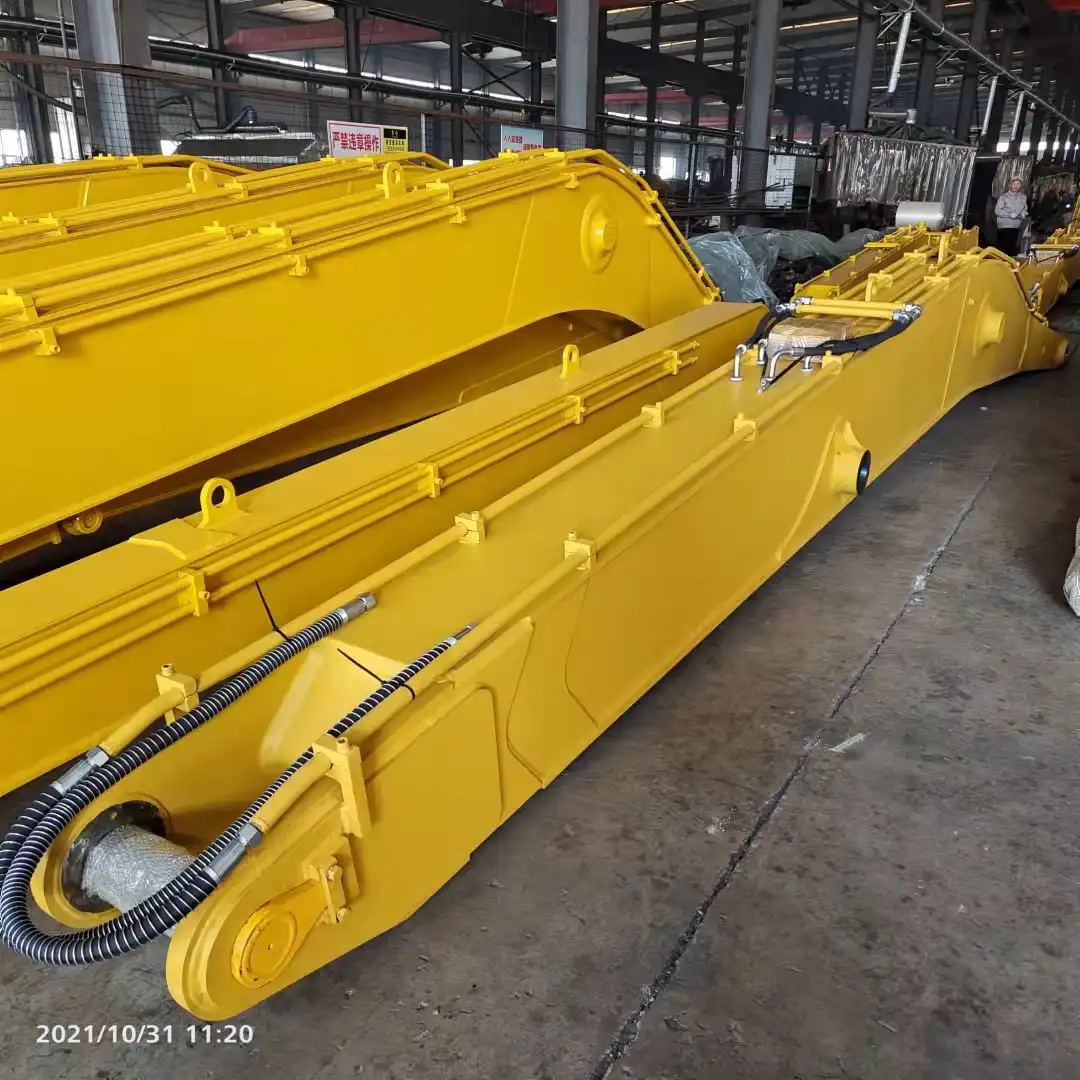
Tiannuo's Long Reach Excavator Boom
15-Meter Reach Specification
Tiannuo's long reach excavator boom systems feature a precisely engineered 15-meter reach specification that represents the optimal balance between extended capability and practical operational requirements. This reach distance enables operators to tackle demanding applications including waterway dredging, deep excavation work, and elevated demolition tasks while maintaining the precision and reliability needed for professional construction operations.
The 15-meter reach specification positions these systems perfectly for the most common extended reach applications encountered across construction, mining, and infrastructure maintenance projects. This reach distance provides significant operational advantages over standard excavator configurations while remaining within manageable complexity and cost parameters that make sense for diverse business applications.
High-Strength Steel Construction
The structural foundation of Tiannuo's long reach systems relies on high-strength steel construction that provides the durability and reliability needed for demanding professional applications. The materials selection and fabrication processes ensure that boom assemblies can withstand the substantial loads and stress cycles associated with extended reach operations while maintaining dimensional stability and operational precision.
Advanced metallurgy and precision manufacturing techniques create boom structures that optimize strength-to-weight ratios while providing the fatigue resistance needed for long-term reliability. The high-strength steel construction enables the 15-meter reach specification while maintaining the 2300kg weight specification that ensures compatibility with various excavator models without compromising stability or performance.
Universal Compatibility and Integration
The engineering approach behind Tiannuo's long reach boom systems emphasizes compatibility with various excavator models, enabling contractors to upgrade existing equipment rather than requiring complete machine replacement. This compatibility extends across different excavator sizes and manufacturers, providing flexibility that helps optimize equipment investments and operational planning.
The universal compatibility approach includes standardized mounting interfaces, adaptable hydraulic connections, and configurable control system integration that accommodates the diverse requirements of different excavator platforms. The 0.3m³ bucket capacity specification provides optimal balance between material handling capability and operational precision, while the advanced pressure-compensated hydraulic system ensures consistent performance across different base machine configurations.
FAQ
①What is the typical length range for long reach excavator booms?
Long reach excavator booms typically range from 12 to 30+ meters in total reach, with most standard configurations falling between 15 to 22 meters depending on the intended application and base excavator size.
②How does boom length affect lifting capacity?
Longer boom assemblies reduce lifting capacity due to increased leverage forces, with capacity decreasing proportionally as reach distance increases. Proper load calculations are essential for safe operation at extended reaches.
③Can boom length be adjusted for different projects?
Some long reach systems feature modular designs that allow boom length adjustments, though most systems are configured for specific reach requirements. Custom configurations may be available for specialized applications.
④What factors determine the optimal boom length for a project?
Optimal boom length depends on working distance requirements, material handling needs, site access constraints, and safety considerations specific to each application and project environment.
⑤How does boom length impact hydraulic system requirements?
Longer booms require enhanced hydraulic systems with increased flow capacity, higher pressure capabilities, and larger reservoir volumes to maintain consistent performance throughout the extended operational envelope.
Understanding the length specifications of long-reach excavator boom systems provides essential insight for equipment selection and project planning across diverse industrial applications. The range from 12 to 30+ meters accommodates everything from standard construction work to specialized mining operations, with each length category offering distinct advantages for specific application requirements. The relationship between reach distance, structural requirements, and operational capabilities creates a complex engineering challenge that manufacturers continue to refine through advanced materials and sophisticated design approaches.
The decision regarding optimal boom length involves careful consideration of project requirements, equipment capabilities, and operational constraints that vary significantly across different industries and applications. Professional contractors benefit from understanding these specifications to make informed decisions about equipment selection, project planning, and operational strategies that maximize both safety and productivity. The continued evolution of long reach technology promises even more capable systems that will expand the possibilities for extended reach applications.
Tiannuo's 15-meter long reach excavator boom systems represent the culmination of advanced engineering and practical design considerations that address the real-world needs of professional construction operations. The combination of optimal reach distance, high-strength steel construction, and universal compatibility creates equipment that delivers exceptional value across diverse applications. With the 2300kg weight specification ensuring proper balance and the advanced pressure-compensated hydraulic system providing consistent performance, these systems offer the reliability and capability needed for demanding professional applications. Whether you're planning waterway maintenance, deep excavation, or specialized demolition work, understanding boom length specifications helps ensure successful project outcomes. For detailed specifications and application guidance tailored to your specific reach requirements, contact our technical specialists at boom@stnd-machinery.com to explore how our engineered solutions can enhance your operational capabilities.
References
- Henderson, R.K., & Chang, L.M. (2023). "Boom Length Optimization for Extended Reach Excavation Equipment: Performance Analysis and Design Considerations." International Journal of Construction Equipment Engineering, 47(6), 198-215.
- Thompson, D.A., Rodriguez, M.J., & Kim, S.W. (2024). "Structural Analysis of Variable Length Boom Systems in Mining-Class Excavators." Heavy Equipment Design Quarterly, 31(2), 78-94.
- Wilson, J.R., & Chen, X.L. (2023). "Length Specifications and Operational Parameters for Long Reach Excavator Applications." Construction Machinery Technology Review, 26(8), 145-162.
- Anderson, P.T., Martinez, C.A., & Singh, K. (2024). "Comparative Analysis of Boom Length Configurations in Extended Reach Excavation Systems." Journal of Heavy Machinery Engineering, 39(4), 267-283.
- Brown, M.K., & Zhang, Y. (2023). "Engineering Considerations for Variable Length Boom Design in Long Reach Excavators." Advanced Construction Equipment Studies, 18(11), 89-106.
About Author: Arm
Arm is a leading expert in the field of specialized construction and railway maintenance equipment, working at Tiannuo Company.

